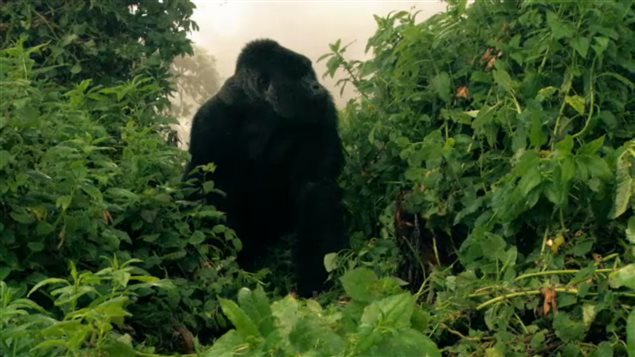While human cases of Ebola are decreasing in West Africa, the virus is taking a heavy toll on chimpanzee and gorillas in Central Africa. The World Wildlife Fund estimates the mortality rate for infected gorillas is 95 per cent and for chimpanzees, 77 per cent.
“Ebola virus affects them very much the same way it would affect us as humans,” says Dale Smith a professor at the Ontario Veterinary College at the University of Guelph. She has worked with gorilla programs in Zimbabwe, Rwanda and Uganda.
“The virus enters the body and attacks a variety of body systems and really results in a body collapse.”

Possibly one-third wiped out
Gorillas and chimpanzees live in wild and remote regions and there is no firm count of how many there are, but it is estimated that one-third of the population has been wiped out by Ebola.
The West African outbreak that has been in the news is human-centred and much more urban than have been previous outbreaks. So it has not affected the great apes which live in Central Africa. Scientists believe they have been in during feeding.
They speculate that for example a particularly rich array of fruit may have attracted fruit bats which may be infected with Ebola but suffer no symptoms. At the same time other animals with less resistance to the virus would arrive and possibly be infected.
Recovery difficult
For pockets of decimated great ape populations to recover, groups of healthy individuals from different areas need to intermingle. Smith says to do that they need to come from healthy habitats which are already under strain from increasing development.
“But if you get an outbreak that really moves like wildfire and has a high mortality rate in an enormous area, then that’s the kind of think that can exterminate either local populations or a whole species because you just don’t have the population to bring the numbers back up again,” says Smith.
“Deforestation due to logging, encroachment of humans due to increased human population and settlement, and hunting and poaching due to the bush meat trade are really important factors affecting the populations,” says Smith.
“Although Ebola and other diseases…are really important, if you don’t have a big safe place to live, then disease becomes a secondary issue.








For reasons beyond our control, and for an undetermined period of time, our comment section is now closed. However, our social networks remain open to your contributions.